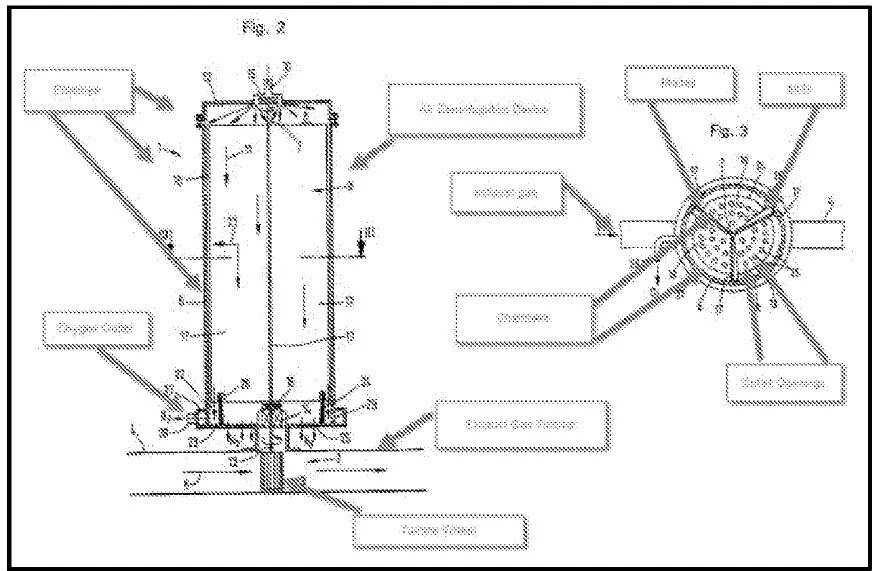A picture is often worth a thousand words. In patent prosecution, where interpretations can vary among reasonable minds, annotations on drawings can be extremely helpful to the reader, especially members of the PTAB. But if you rely on such annotated drawings, they better be legible. A recent PTAB decision illustrates the pitfall in relying on unreadable or confusingly annotated figures.
The case (14/350,636) relates to an air centrifugation device allowing one to separate oxygen molecules from nitrogen molecules. Claim 1 is provided below:

The examiner cited a single anticipation reference – Pletschacher – in one of the rejections. The rejected claim had quite a few limitations and as shown above is over a page long. The examiner did not cite any reference numerals in the cited art, nor did he cite any paragraph or line numbers, or really anything else. In other words, the only words actually written down by the examiner in the rejection as to how the cited art anticipated claim 1 is the following:
Please see Pletschacher Annotated Figures 2-3 Below.
The examiner provided the annotated figures in several Office actions. The annotation is reproduced below at a resolution similar to what one finds on Public PAIR.

To say the rejection is illegible is an understatement. In responding to the Applicant’s argument in the appeal brief that the examiner’s annotations were illegible, you would have thought the examiner would just provide a better illustration. Nope. The examiner just argued that the applicant really did understand the rejection and so it was not necessary. Think about what that means… the USPTO is going to reject your application and not even tell you why… and just argue that you really do understand and thus force you to appeal and spend years and significant monetary resources. The applicant here had to wait almost six years from filing to get a PTAB decision and spent many thousands of dollars that did not need to be spent.
That is a shocking approach for an examiner to take; but even more shocking is that two supervisory examiners signed off on the approach, including maintaining the rejection after the filing of the appeal brief and submitting an answer without ever legibly explaining why the claim was rejected. I won’t put their names here, but you can find them on-line on PAIR.
The PTAB judges were not pleased.
As an initial matter, we agree with Appellant (see Appeal Br. 24–25) that the annotated Figures provided by the Examiner are not legible. The Examiner does not provide legible annotations in the Answer. Moreover, the Examiner does not otherwise identify the structures in Pletschacher’s Figure 3 referred to by the Examiner as “2 concentric circles.” As a result, we cannot understand how the Examiner interprets Pletschacher’s Figure 3 as teaching the argued claim limitation.
So, while it seems like stating the obvious, make sure annotated figures are actually legible once uploaded to PAIR.
Leave a comment